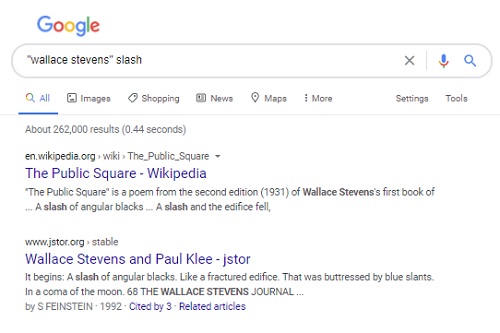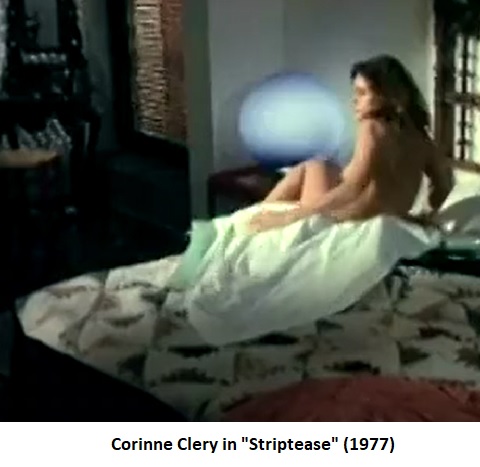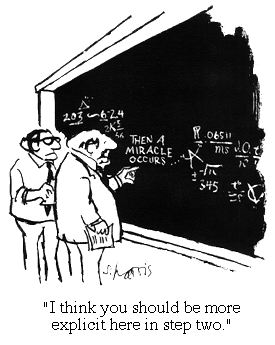Synchronology check:

See too the previous post.
Patricia Lockwood quoting Nabokov —
‘I saw the board as a square pool of limpid water
with rare shells and stratagems rosily visible
upon the smooth tessellated bottom, which
to my confused adversary was all ooze and
squid-cloud.’ Conceptions of space, dimension,
movement, strategy.
— London Review of Books ,
Vol. 42 No. 21 · 5 November 2020
Related images —
From this journal on October 26:
From this journal this morning:
A dancer forms a heart shape with her hands. Finishing the gesture,
she recovers the point missing from the bottom of the above shield . . .

The service hosting my Log24 images is down. I do not know
when it will be up again.*
Meanwhile, a WordPress Media workaround image —
Related narrative for a Code Girl —
“Tickle: Change, Shift, Reveal.”
* Update at 5 AM Oct. 30: Images are back.
To celebrate their return . . . .
“Dance Practice Video,” still and detail.
Johann A. Makowsky recently reviewed Modernism, Fiction and Mathematics
by Nina Engelhardt. Engelhardt is a Wissenschaftliche Mitarbeiterin at the
University of Stuttgart. Makowsky is a professor emeritus of the computer science
department at the Technion-Israel Institute of Technology …
The quotation below, by Makowsky not Engelhardt, is from Notices of the
American Mathematical Society , November 2020 (Vol. 67, No. 10, p. 1594) —
"Hermann Weyl was known for his inspiring lectures,
celebrating mathematics as a performing art. It is then likely
that he was both the model for the magister ludi celebrating
the Glass Bead Game, and the source of Hesse’s awareness of
modern mathematics as the art of the possible, rather than
the science of true nature."
Possibly .
Consider also the diamond as Spielraum .
From the previous post:
“… all things, whether below or above appearance,
are one and that it is only through reality, in which
they are reflected or, it may be, joined together,
that we can reach them.”
See also “The Bond with Reality.”
The reported death on Monday of the Random House editor of the 1996
book Primary Colors: A Novel of Politics suggests a search in this journal
for “primary colors.” From that search, some non-political quotations —
| From “The Relations between Poetry and Painting,” by Wallace Stevens:“The theory of poetry, that is to say, the total of the theories of poetry, often seems to become in time a mystical theology or, more simply, a mystique. The reason for this must by now be clear. The reason is the same reason why the pictures in a museum of modern art often seem to become in time a mystical aesthetic, a prodigious search of appearance, as if to find a way of saying and of establishing that all things, whether below or above appearance, are one and that it is only through reality, in which they are reflected or, it may be, joined together, that we can reach them. Under such stress, reality changes from substance to subtlety, a subtlety in which it was natural for Cézanne to say: ‘I see planes bestriding each other and sometimes straight lines seem to me to fall’ or ‘Planes in color. . . . The colored area where shimmer the souls of the planes, in the blaze of the kindled prism, the meeting of planes in the sunlight.’ The conversion of our Lumpenwelt went far beyond this. It was from the point of view of another subtlety that Klee could write: ‘But he is one chosen that today comes near to the secret places where original law fosters all evolution. And what artist would not establish himself there where the organic center of all movement in time and space—which he calls the mind or heart of creation— determines every function.’ Conceding that this sounds a bit like sacerdotal jargon, that is not too much to allow to those that have helped to create a new reality, a modern reality, since what has been created is nothing less.”
|
* Title suggested in part by Monday evening’s post Annals of Artspeak
and the related Microsoft lockscreen photo credit —

* Song lyric, soundtrack album of
“Midnight in the Garden of Good and Evil“

These news items suggest a review —
The above “Pynchon’s Paranoid History” page number appeared
in this journal on Groundhog Day, 2015 —
David Justice on a Zeta-related theory —
See the above title in this journal.
Related material — The ad where I first encountered
the TV series “A Discovery of Witches.”
See too a related map.
“C24 is the list of codewords of the extended
binary Golay code C24. Each codeword is expressed
by a subset of the set M of the positions [1, . . . , 24]
of MOG.”
— From Shimada’s notes on computational data at
http://www.math.sci.hiroshima-u.ac.jp/~shimada/
preprints/Edge/PaperEdge/compdataEdge.pdf .
* Related material — A new Ariana Grande video and . . .
a recent digital artwork, “Code Girl,” with accompanying story —
Stanley E. Payne and J. A. Thas in 1983* (previous post) —
“… a 4×4 grid together with
the affine lines on it is AG(2,4).”
Payne and Thas of course use their own definition
of affine lines on a grid.
Actually, a 4×4 grid together with the affine lines on it
is, viewed in a different way, not AG(2,4) but rather AG(4,2).
For AG(4,2) in the proper context, see
Affine Groups on Small Binary Spaces and
The Galois Tesseract.
* And 26 years later, in 2009.
Wikipedia on what has been called “the doily” —
“The smallest non-trivial generalized quadrangle
is GQ(2,2), whose representation* has been dubbed
‘the doily’ by Stan Payne in 1973.”
A later publication relates the doily to grids.
From Finite Generalized Quadrangles , by Stanley E. Payne
and J. A. Thas, December 1983, at researchgate.net, pp. 81-82—
“Then the lines … define a 3×3 grid G (i.e. a grid
consisting of 9 points and 6 lines).”
. . . .
“So we have shown that the grid G can completed [sic ]
in a unique way to a grid with 8 lines and 16 points.”
. . . .
“A 4×4 grid defines a linear subspace
of the 2−(64,4,1) design, i.e. a 4×4 grid
together with the affine lines on it is AG(2,4).”
A more graphic approach from this journal —
Click the image for further details.
* This wording implies that GQ(2,2) has a unique
visual representation. It does not. See inscape .
The title refers to a man called by John Baez
“The infamous pseudohistorian Eric Temple Bell.”
(See my post The Magpie.)
Today the American Mathematical Society (AMS) has
an obituary for Donald Babbitt (1936-2020), who
reportedly died on October 10.
Babbitt is the co-author of an article on Bell from the
June/July 2013 AMS Notices .
Midrash for the late Harold Bloom,
author of The Daemon Knows —

It is perhaps not irrelevant that the phrase "on Saturday" in the
Los Angeles Times of Sunday, October 18, 2020, refers to the
preceding day — October 17, 2020. See too that date here.
Related material —
— November 2020
Notices of the American Mathematical Society
For fans of mathematics and narrative —
Some may fancy Bloom as a dybbuk (cf, "A Serious Man") turning
the page in the article above to the next page, 1590 —
“If I were a sculptor, but then again no
Or a man who sells potions in a travelling show”

Randi reportedly died on Tuesday, October 20.
“Italic with Derision”
“These things used to be on the back of cornflakes boxes,”
Mr. Randi, his voice italic with derision, once told the
television interviewer Larry King. “But apparently some
scientists either don’t eat cornflakes, or they don’t read
the back of the box.” — Margalit Fox
See as well …
Space People Lightbulb Puzzle
by presentationgo.com
“How many space people does it take
to screw in a lightbulb?”
* I.e. , the code girl of the previous post.
See also The Spelman Trick.
The image above, from an Oct. 15 Harvard Crimson article, is not credited.
But see the Crimson’s “Code Girl” page and the website of Margot Shang.
See also Red and Gray in this journal.
From a page linked to yesterday in The Newton Methods —
A related fiction —
|
From one of the best books of the 20th century:
by Richard Brautigan “The Chemicals that resided in the jar were a combination of hundreds of things from all over the world. Some of The Chemicals were ancient and very difficult to obtain. There were a few drops of something from an Egyptian pyramid dating from the year 3000 B.C. There were distillates from the jungles of South America and drops of things from plants that grew near the snowline in the Himalayas. Ancient China, Rome and Greece had contributed things, too, that had found their way into the jar. Witchcraft and modern science, the latest of discoveries, had also contributed to the contents of the jar. There was even something that was reputed to have come all the way from Atlantis…. … they did not know that the monster was an illusion created by a mutated light in The Chemicals. a light that had the power to work its will upon mind and matter and change the very nature of reality to fit its mischievous mind.” |
Click medal for some background. The medal may be regarded
as illustrating the 16-point Galois space.
The Ballad of Goo Ballou —
the Sequel to . . .
“Let me count the ways” is an appropriate request
for students of the discrete , as opposed to the
continuous , which instead requires measurement .
Related academic material —
Raymond Cattell on crystallized vs. fluid intelligence.
For a more literary approach, see Crystal and Dragon
and For Trevanian.
This post was inspired in part by
the American Sequel Society and . . .

The previous post, "Frame Analysis," was about a death
related to Macalester College.
Wikipedia on the man for whom the college was named —
"In the 1870s, Rev. Dr. Edward Duffield Neill turned to
Macalester for sponsorship for the failing institution
in Minnesota known as Jesus College. "
Logos —
For the late John Schue —
Another event on Schue's reported date of death —
Related philosophical remarks —
Also on June 12, 2007 —
Click on the Wiktionary image for the Babel story.
Click on the Springer.com link for related posts.
Wittgenstein, Philosophical Investigations 118-119 —
| 118. | Where does our investigation get its importance from, since it seems only to destroy everything interesting, that is, all that is great and important? (As it were all the buildings, leaving behind only bits of stone and rubble.) What we are destroying is nothing but houses of cards and we are clearing up the ground of language on which they stand. |
| 119. | The results of philosophy are the uncovering of one or another piece of plain nonsense and of bumps that the understanding has got by running its head up against the limits of language. These bumps make us see the value of the discovery. |
See “Unfolded.jpg” in this journal. From that search —
Compare and contrast these figures with images by Wittgenstein in . . .
Related material from last night’s post Modernist Cuts —

Schlick also appears in recent posts tagged Moriarty Variations.

"The bond with reality is cut."
— Hans Freudenthal, 1962

Related screenshot of a book review
from the November AMS Notices —

The above phrase “neurolinguistic hacker” does not do justice to
Neal Stephenson’s remarks on “Ba’al Shem.”
This post was suggested by an Oct. 12 Wired book review.
From the previous post —

Lily Collins in a more recent mattress meditation —

See as well Plaid in this journal.
Illustration for a New York Times July 15 “Tech Fix” piece:
“You’re Doomscrolling Again.“

One possible antidote:

Related fiction: “Quarantine Story.“
“Show me all the blueprints.” — Attributed to Howard Hughes
Those posts mark the end of Yom Kippur 2006
and the death of the father of James R. Swartz,
Harvard ’64, for whom the central building of
Harvard Divinity School was renamed in 2019.
See as well last night’s post, “With Shields Emblazoned,”
on the death of a notable Divinity School leader.
See “Einstein on Acid” by Stephen Battersby
(New Scientist , Vol. 180, issue 2426 — 20 Dec. 2003, 40-43).
That 2003 article is about some speculations of Metod Saniga.
“Saniga is not a professional mystic or
a peddler of drugs, he is an astrophysicist
at the Slovak Academy of Sciences in Bratislava.
It seems unlikely that studying stars led him to
such a way-out view of space and time. Has he
undergone a drug-induced epiphany, or a period
of mental instability? ‘No, no, no,’ Saniga says,
‘I am a perfectly sane person.'”
Some more recent and much less speculative remarks by Saniga
are related to the Klein correspondence —
arXiv.org > math > arXiv:1409.5691:
Mathematics > Combinatorics
[Submitted on 17 Sep 2014]
The Complement of Binary Klein Quadric
as a Combinatorial Grassmannian
By Metod Saniga
“Given a hyperbolic quadric of PG(5,2), there are 28 points
off this quadric and 56 lines skew to it. It is shown that the
(286,563)-configuration formed by these points and lines
is isomorphic to the combinatorial Grassmannian of type
G2(8). It is also pointed out that a set of seven points of
G2(8) whose labels share a mark corresponds to a
Conwell heptad of PG(5,2). Gradual removal of Conwell
heptads from the (286,563)-configuration yields a nested
sequence of binomial configurations identical with part of
that found to be associated with Cayley-Dickson algebras
(arXiv:1405.6888).”
Related entertainment —
See Log24 on the date, 17 Sept. 2014, of Saniga’s Klein-quadric article:
“Pure mathematics is, in its way, the poetry of logical ideas.
One seeks the most general ideas of operation which will
bring together in simple, logical and unified form the largest
possible circle of formal relationships.”
— Albert Einstein, May 1, 1935, obituary for Emmy Noether

The 35 small squares between the pyramid and the pentagon
in the above search result illustrate the role of finite geometry
in the Miracle Octad Generator of R. T. Curtis.

A web search for “Wallace Stevens” + Virtuoso yields . . .
A thousand crystals’ chiming voices,
Like the shiddow-shaddow of lights revolving
To momentary ones, are blended,
In hymns, through iridescent changes,
Of the apprehending of the hero.
These hymns are like a stubborn brightness
Approaching in the dark approaches
Of time and place, becoming certain,
The organic centre of responses,
Naked of hindrance, a thousand crystals.
To meditate the highest man, not
The highest supposed in him and over,
Creates, in the blissfuller perceptions,
What unisons create in music.
The above Vanity Fair article was republished on the Web by VF
on September 3, 2013. See also this journal on that date.
Related religious remarks —
* “Bulk apperception” is a phrase from Westworld. See Log24 notes.
” Another leading Irish poet, Paul Muldoon,
compared Mr. Mahon to a renowned American writer.
‘A technician to rival Richard Wilbur, by whom he was
deeply influenced both as a poet and translator. . . .’ “
A search in this journal for Wilbur yields . . .
New York magazine's "The Cut" —
BAD SCIENCE
JULY 14, 2016
Why It Took Social Science Years to Correct a Simple Error
About ‘Psychoticism’
By Jesse Singal
"What should we make of all of this? Partly, of course, this is
a story of conflicting personalities, of competitiveness between
researchers, of academics acting — let’s be frank — like dicks."
Or, worse, like New York Times reporter Benedict Carey —
|
A Theory About Conspiracy Theories
In a new study, psychologists tried to get a handle on the personality types that might be prone to outlandish beliefs.
By Benedict Carey, New York Times science reporter, . . . . The personality features that were solidly linked to conspiracy beliefs included some usual suspects: entitlement, self-centered impulsivity, cold-heartedness (the confident injustice collector), elevated levels of depressive moods and anxiousness (the moody figure, confined by age or circumstance). Another one emerged from the questionnaire that aimed to assess personality disorders — a pattern of thinking called “psychoticism.” Psychoticism is a core feature of so-called schizo-typal personality disorder, characterized in part by “odd beliefs and magical thinking” and “paranoid ideation.” In the language of psychiatry, it is a milder form of full-blown psychosis, the recurrent delusional state that characterizes schizophrenia. It’s a pattern of magical thinking that goes well beyond garden variety superstition and usually comes across socially as disjointed, uncanny or “off.”
In time, perhaps some scientist or therapist will try to slap a diagnosis on believers in Big Lie conspiracies that seem wildly out of line with reality. For now, Dr. Pennycook said, it is enough to know that, when distracted, people are far more likely to forward headlines and stories without vetting their sources much, if at all. |
Some elementary fact-checking reveals that historical definitions
of "psychoticism" vary greatly. Carey forwards this bullshit without
vetting his sources much, if at all.
James Hillman
EGALITARIAN TYPOLOGIES
VERSUS THE PERCEPTION OF THE UNIQUE
“The kind of movement Olson urges is an inward deepening of the image,
an in-sighting of the superimposed levels of significance within it.
This is the very mode that Jung suggested for grasping dreams —
not as a sequence in time, but as revolving around a nodal complex.”
See also posts tagged The Well.
Well, which is it, Hillman? Superimposing or revolving?
Powered by WordPress